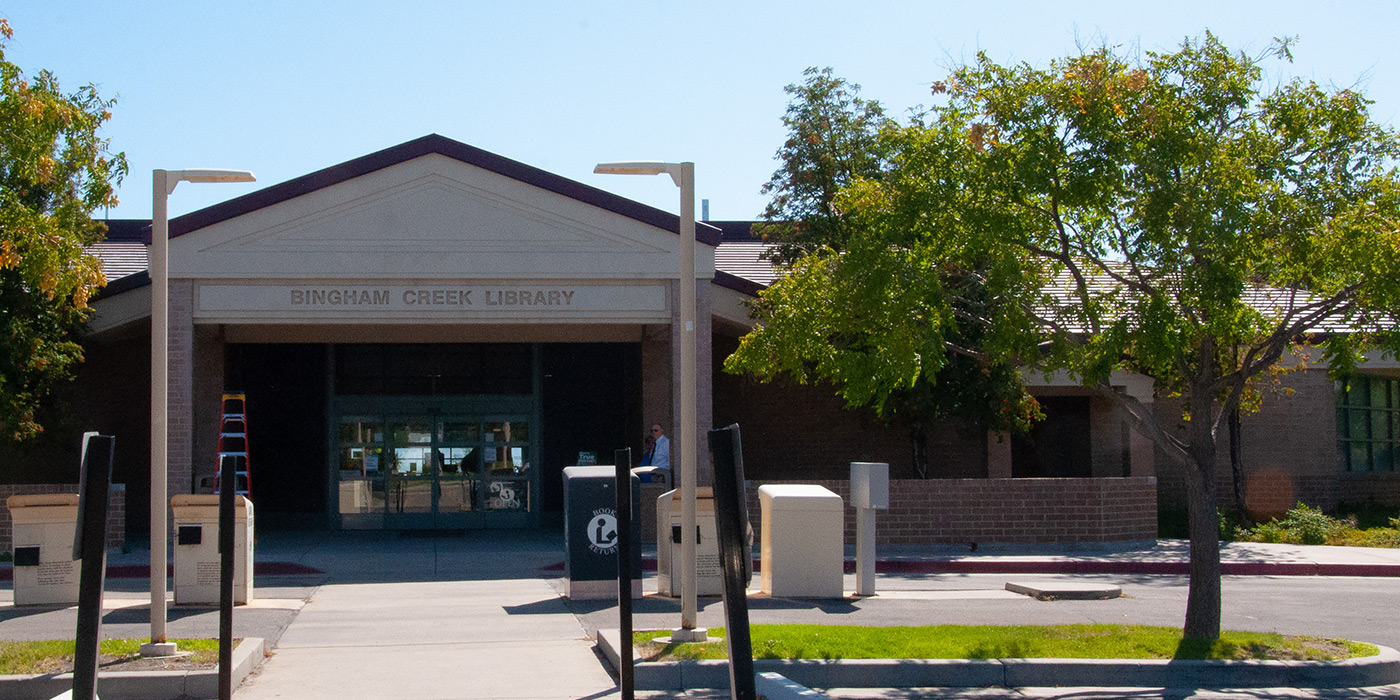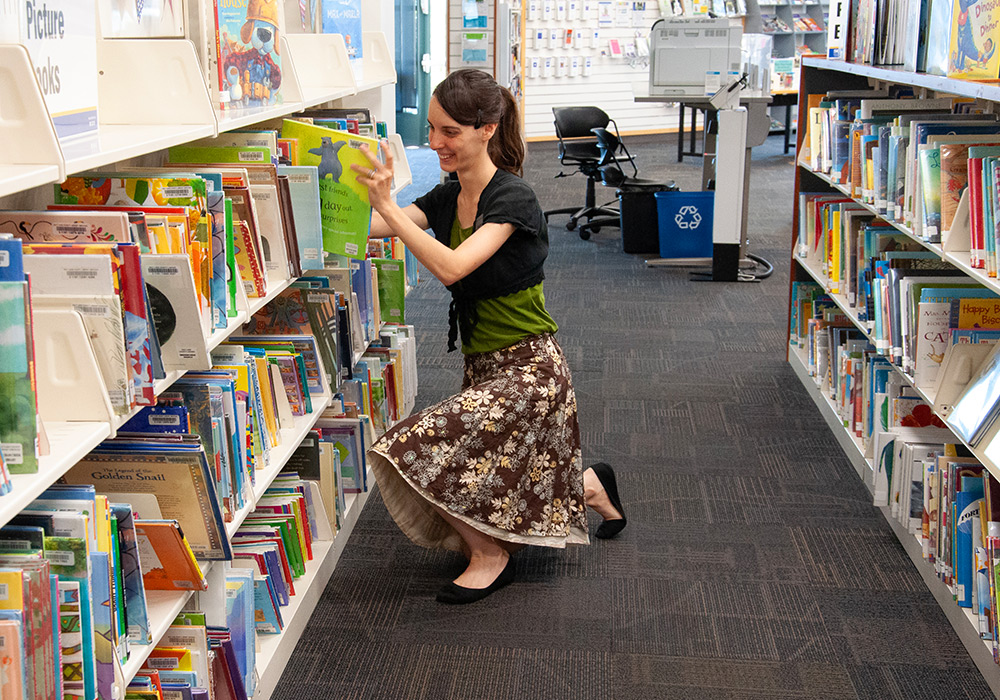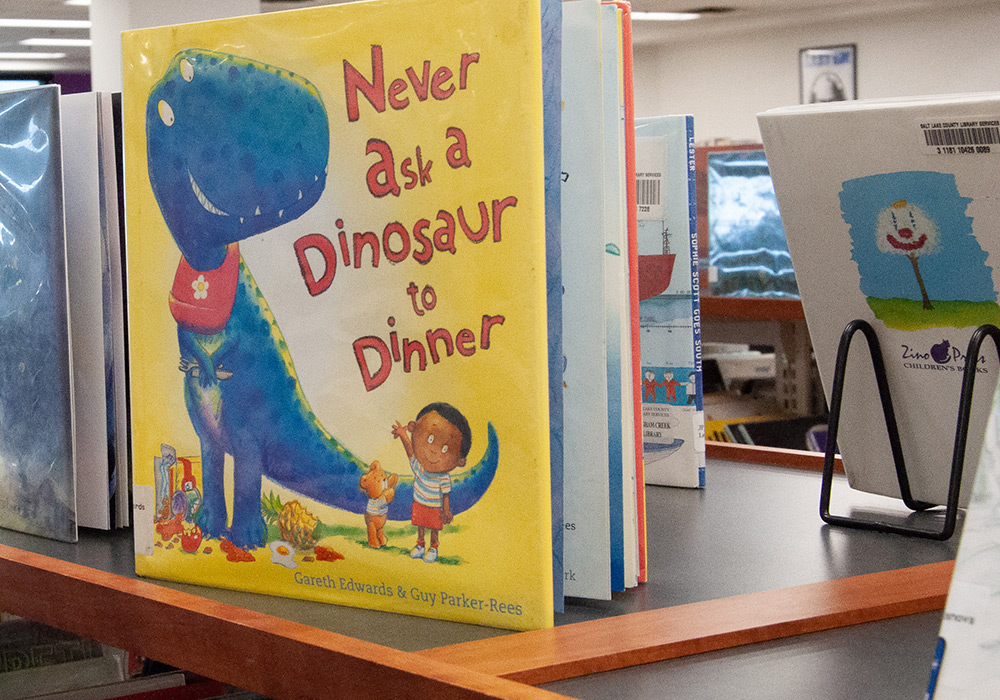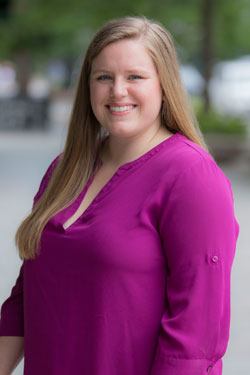We sat down with Heather Buhler, a librarian at the Bingham Creek branch, and Tina Bartholoma, senior librarian in the Outreach and Programming Team for the Salt Lake County Library, to talk about their efforts to improve reading and literacy skills in our community.
Bartholoma, who’s been in the library system for nearly 20 years, is part of United Way of Salt Lake Early Reading Network team, which brings professionals from schools, businesses, and across the community to address barriers to reading proficiency.
Check out our conversation below.
Q: What made you want to be a librarian?
Tina: I was at the library almost every day in high school, and I was like “oh, you know, I’m here anyway, maybe I should get paid for being here, so I made that my goal.
Heather: I love researching, so I used to say my dream job was being paid to be an author’s research assistant. It didn’t click until someone was like “oh, that’s what a librarian is.” The reason I love doing it is because I love helping people. It’s immense job satisfaction. It doesn’t pay the highest, but the fact that I can help people and help them in very different ways is the most satisfying thing I could do. And I don’t want to work anywhere else because of that.
Q: What’s a story of how you helped someone?
H: There are tons of little ones every day.
A big one that I remember was a refugee family at a previous library where I was working needed medical assistance for a daughter that had a brain tumor. It was $20,000+. They didn’t speak English and the scary part of trying to have a conversation barrier.
You can’t give any legal advice and I couldn’t tell them what to do, they needed to apply for this financial assistance. So, I spent 2-3 hours with them, just trying to figure it out. Being able to serve in such an impactful way was exceedingly rewarding.
T: I was just working one of our large annual events called ToshoCon and it’s a free anime and Manga convention for teens. The teens were coming up and saying ‘this is our space, we can be ourselves and geek out as much as we want.’ Just being a part of that was the most recent real joy from my job.
Q: How did you get involved with United Way of Salt Lake?
T: When I became a senior librarian, they told me, ‘Hey, you’re now a member of this group – the Early Reading Network, which United Way of Salt Lake facilitates.’ The goals just really align with the things we really believe in the county library system. It’s been a really great collaboration.
Q: How have you been integrating dyad reading method?
H: Once a month we have trainings to give us connections or ideas or things to help facilitate a larger awareness of the community. In one of these, we were presented the dyad reading strategy by United Way. They showed the extreme effectiveness.
Dyad reading is when students are paired together to read the same book aloud and point out each word with their fingers. The pairs include a student who is a little more proficient in reading than the other, so the struggling reader can leader alongside their partner and the excelling student can continue to hone their skills. It’s a natural continuation of what early literacy is but enabling the child to do it themselves.
We had a lot of parents, especially as school begins to start, they are either told or can guess that their students aren’t on grade-level. They come to us because they know we’re a trusted resource and are supposed to have the answers.
So, to be able to present about how effective dyad was in getting kids to learn one to three grades higher in such a short period of time was powerful to me. It gives parents a lot of hope where they come to us feeling a little bit lost. They know we’re supposed to have answers, to be able to facilitate that is great.
Q: How do you see it implemented?
H: We are facilitators for the program. We encourage parents to do it at home. We believe the goal of the program is to make the child comfortable. We explain it to them and create a way that we can send them on their way and be able to do it at home.
T: We’ve been teaching parents that reading together with your kids is vital. That’s one of the library’s main missions. In our storytimes and our early literacy programs, we teach that to toddlers. But once the kids hit elementary age, the skills that you use when they’re younger, they don’t translate as well when you’re trying to teach the child to read for themselves.
We were excited to learn about the dyad program because it is a researched, proven method that parents can use at home, that can also be used in the classroom, that really helps facilitate reading skills. It’s been a natural addition to what we’ve already done, enabling us to reach a whole new level with second grade and up.
Q: Why do you think it’s important to have this program available to parents?
H: A prime mission of the library is to create lifelong readers and learners. And to be able to facilitate community connections, greater relationships. The dyad reading program does that really well. So, it’s a natural fit.
Q: What are some other ways kids can get involved with their local library?
H: People don’t know of the resources we have available. So, the first thing we say is “get a library card.” That’s the hidden access card to so much more. We have resources like free online homework help; we have an inter-library loan where people can get books from across the nation; we have STEM programs disguised as Harry Potter programs, where they learn and gain community connections. We have so much to offer, that a library card is just the beginning access point. We’re all about community connections and continued perpetual learning.
T: We do have the full access card that people can sign up their kids to get, but we also have a library card called the Student Card. And the Student Card doesn’t need a guardian’s signature or anything like that. There’s never any late fees. The students are able to check out three things at a time and use all of our online resources with just the student card — and all our programs are free.
Q: How would someone get a library card?
T: We do have an online application that has to be filled out for both. For the full access card, we do need an adult to bring their picture ID, proof of address. For the student card, the student just needs to know some primary information, they need to know their full name, their address, their phone number, and possibly an email address. They just have to have their exact information and they can get a card.
Learn more about getting a library card and apply for yours here.
Q: Why is it important to have these programs at local libraries and not just schools?
T: One of the things that libraries do that schools don’t is we are open when families are together. School ends at 2:30 pm or 4:00 pm. Then, the school is not available. We’re the space that’s there when families are together.
Plus, we provide materials such as wifi and computer access. And things that many people in our community can’t afford to have at home. I was reading some infographics recently. 70% of teachers assign homework that has to be done online. The number of students they have that don’t have wifi in the home is a lot higher than you would think. So we have great programs, and things like that, but just the services that we offer daily on a constant basis are of a huge benefit to the community.
Q: What other things do you want people to know about the County Library?
T: You have no idea what the library can offer you. Take the time to find out.
H: We’re not just books anymore. We’re not just what you think we are, there’s more here than you can possibly imagine. The people who work here want to help you. They are so happy to help. We have no other motive than to help people. Our entire goal is to make your life better and happier.
Visit thecountylibrary.org to find the closest library branch to you and learn more about dyad reading in the blog, Partner Reading is Giving Struggling Students a Chance to Succeed.
By Kelly Schmidt, Content Manager at United Way of Salt Lake




